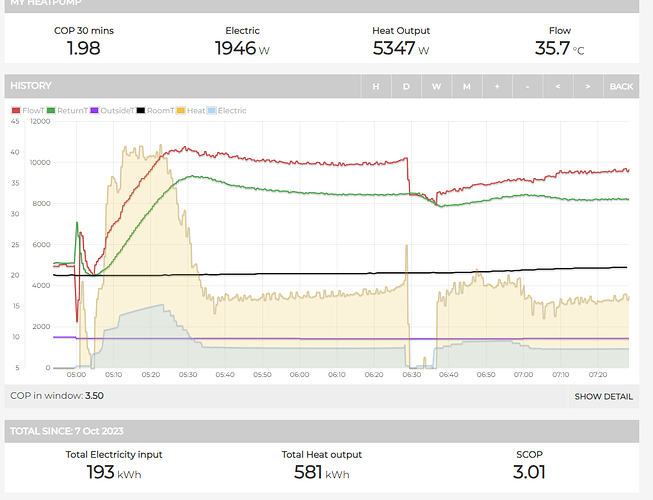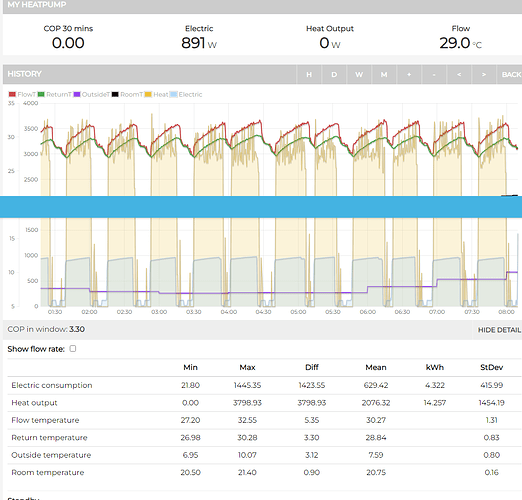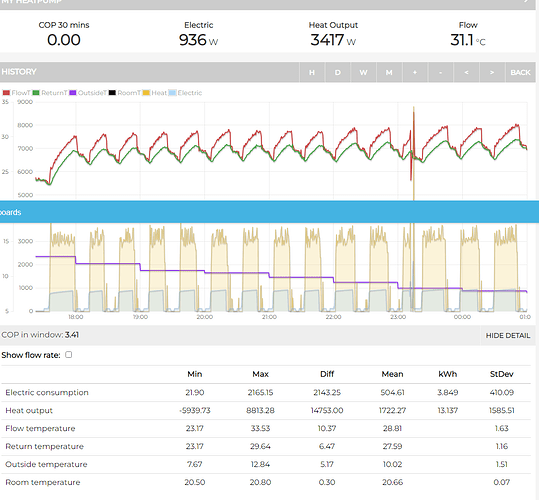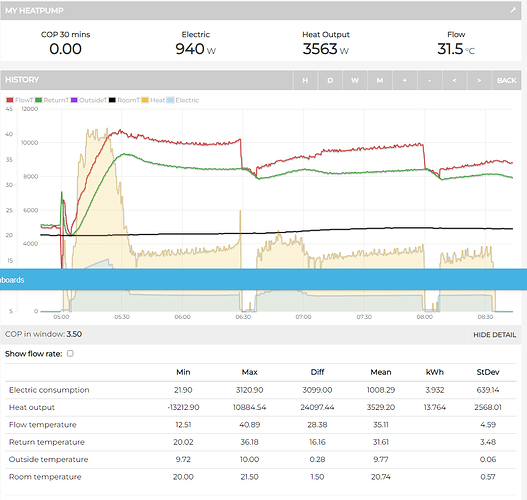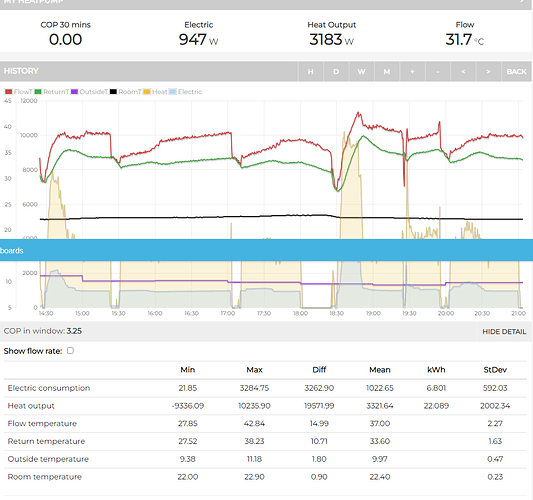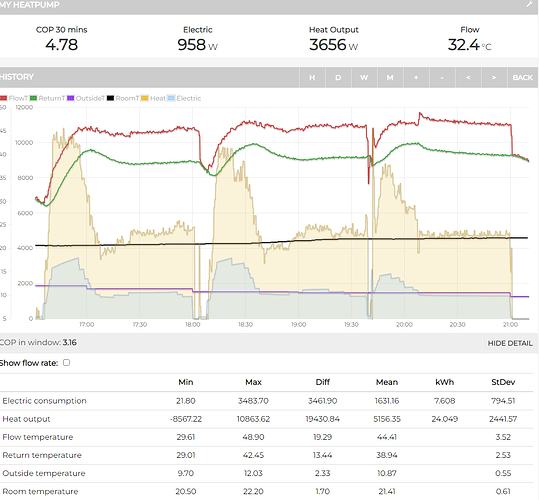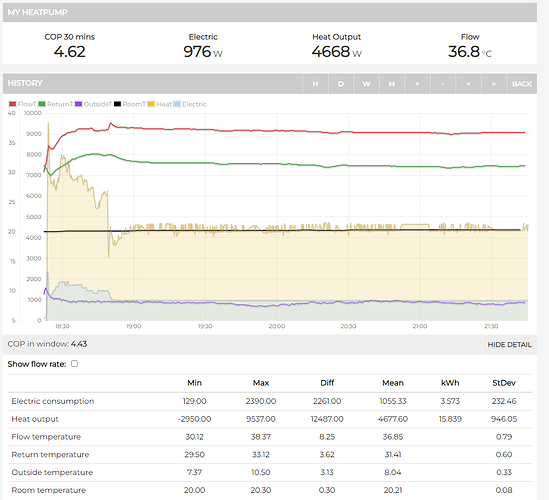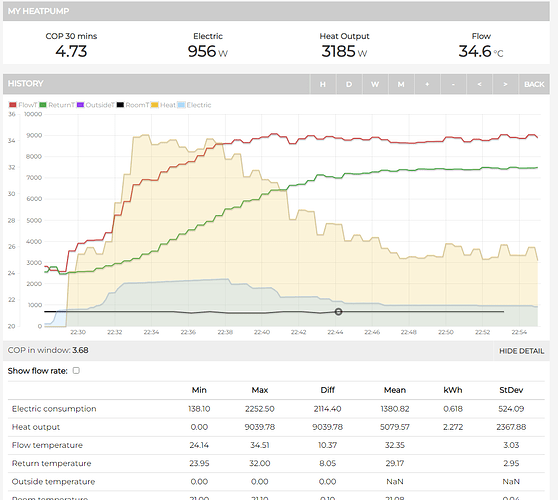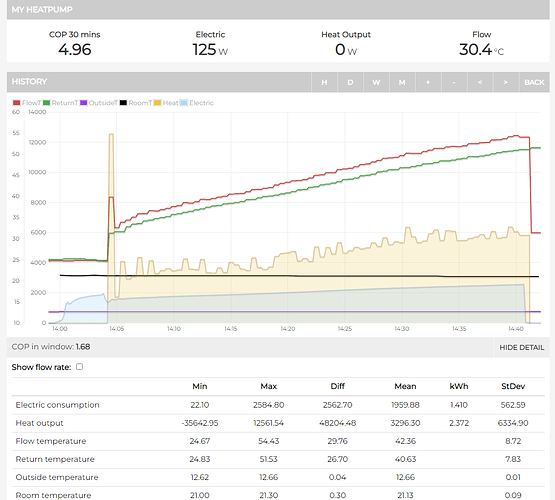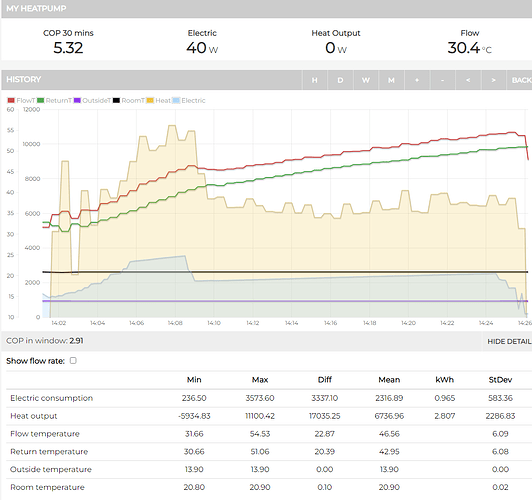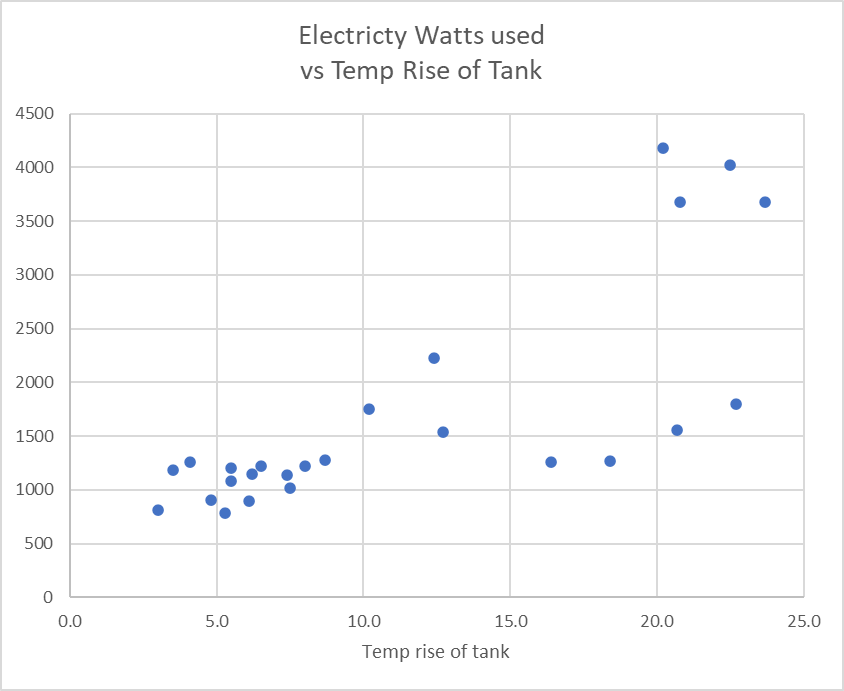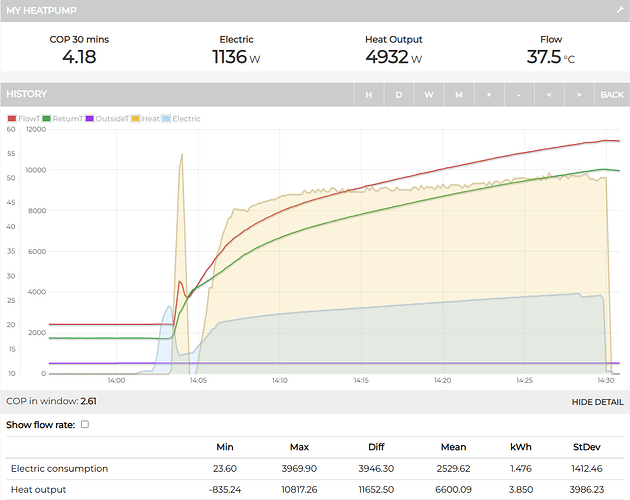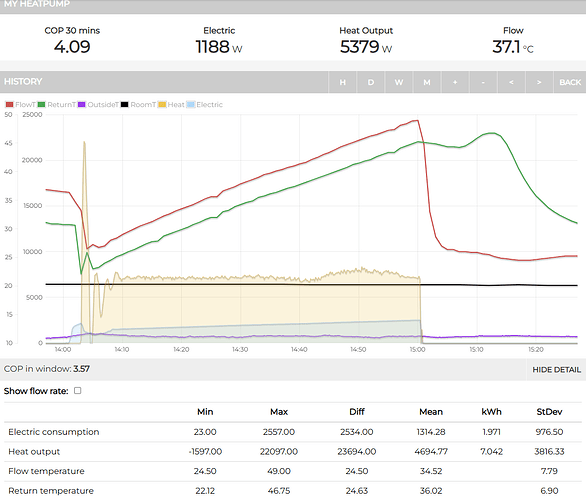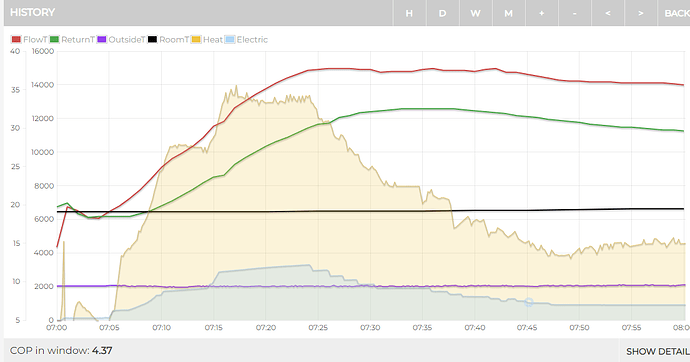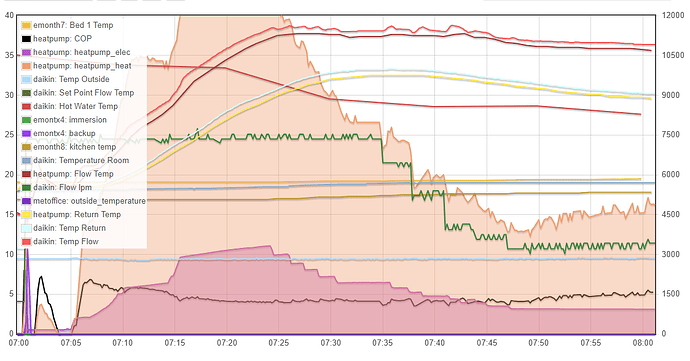You will not be able to use the pressure independent presettable danfoss TRVs. Those are intended for large heating systems that experience a wide range of differential pressure and operate at large (20-30C) deltaT between supply and return.
If your rads really are pretty much equal in deltaT then your existing setup may not be terribly out of balance…
We could do the math if it got to a steady state at a decently high flow temperature. The room also needs you be at a known temperature and without drafts though. (you can’t open windows too reduce it to 20C because that introduces extra air movement which will increase radiator output)
You can also try the heat meter balancing version.
- pump on all rads open. Note flow rate.
- switch off one rad, not flowrate, switch on again
Repeat until you see the effect of turning off each rad by the difference in flowrate between everything and one less. Compare against what it should be by math.
That isn’t perfect (shutting off flow to one will reduce pipework pressure drops and increase flow to others; especially on branched systems with marginal pipe sizing; less so on manifold type systems) but will pickup gross imbalance.
